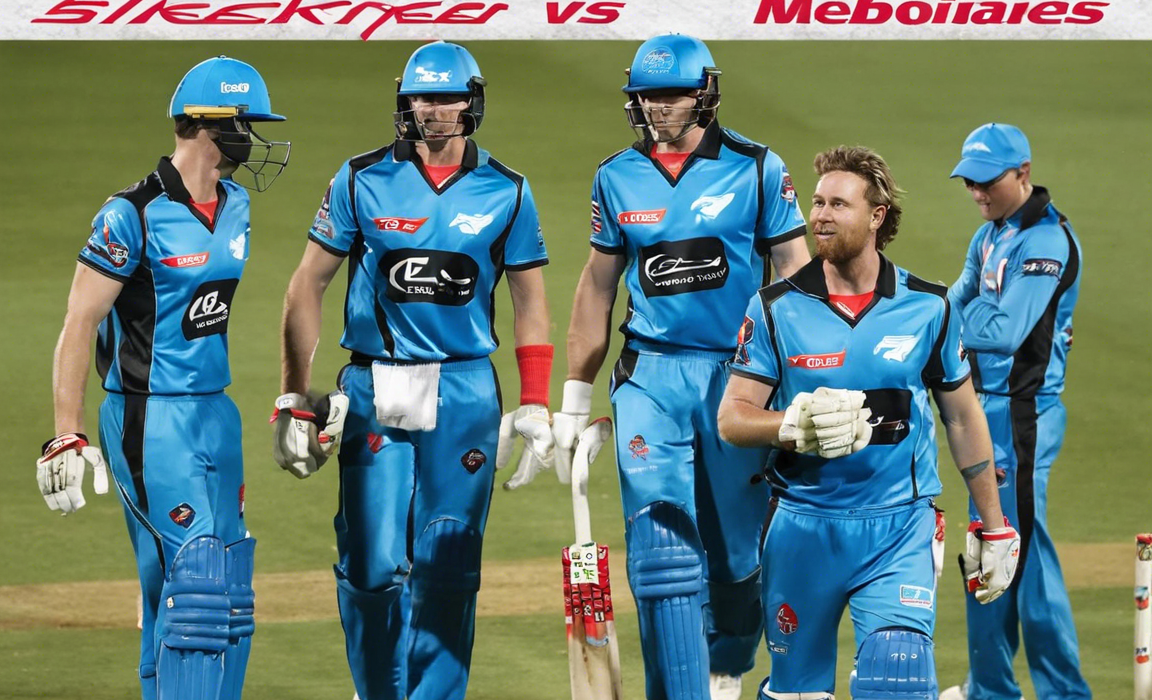The Adelaide Strikers vs Melbourne Renegades cricket match is always an exciting clash to watch, whether you catch it live at the stadium or follow the scorecard online. The Big Bash League (BBL) in Australia features some of the best cricketing talents, and when two top teams like Adelaide Strikers and Melbourne Renegades face off, fans are in for a treat.
Let’s delve into what a typical scorecard for an Adelaide Strikers vs Melbourne Renegades match might look like, breaking down the key elements and what they signify.
Team Overview
Adelaide Strikers
The Adelaide Strikers, based in South Australia, are known for their attacking style of play, strong batting lineup, and formidable bowling attack. Players like Rashid Khan, Travis Head, and Alex Carey are crucial to their success. When you see their name on the scorecard, expect fireworks on the field.
Melbourne Renegades
The Melbourne Renegades, hailing from Victoria, are fierce competitors with a history of pulling off surprise victories. With power-hitters like Aaron Finch and dynamic bowlers such as Kane Richardson, they can turn the game on its head in a matter of overs.
Scorecard Breakdown
Batting
- Player Name: The names of the batsmen in the order they came to bat.
- Runs: The number of runs each batsman scored.
- Balls: The number of balls faced by each batsman.
- 4s/6s: The boundaries (4s) and sixes (6s) hit by the batsmen.
- Strike Rate: The batsman’s scoring rate calculated as runs scored per 100 balls faced.
Bowling
- Player Name: The bowlers in the order they bowled.
- Overs: The number of overs bowled by each player.
- Runs: The total runs conceded by the bowler.
- Wickets: The number of wickets taken by the bowler.
- Economy Rate: The average number of runs scored per over bowled by the player.
Fielding
- Catches: The number of catches taken by each fielder.
- Run Outs: Any run outs executed by the fielding team.
Extras
- Byes: Extra runs scored due to byes.
- Leg Byes: Extra runs scored due to leg byes.
- Wides: Additional runs scored off wide deliveries.
- No Balls: Extra runs scored off no-ball deliveries.
Key Moments
Keep an eye out for critical junctures in the match that can be game-changers:
- Powerplay: The first six overs when fielding restrictions are in place.
- Middle Overs: The phase where teams set up for the final onslaught or attempt to rebuild.
- Death Overs: The last few overs where teams go all out to maximize runs or take wickets.
Conclusion
The Adelaide Strikers vs Melbourne Renegades match is sure to be a rollercoaster ride, with thrilling moments and outstanding performances from both teams. Whether you’re a Strikers fan or back the Renegades, watching the match unfold through the scorecard offers a unique perspective on the game’s ebb and flow.
Familiarizing yourself with the scorecard elements and understanding their significance can enrich your viewing experience and help you appreciate the nuances of cricket even more.
FAQs:
1. What does the “Powerplay” period signify in a T20 match?
In T20 cricket, the powerplay refers to the first six overs of the batting team’s innings when fielding restrictions are in place. During this phase, only a maximum of two fielders are allowed outside the 30-yard circle, enabling batsmen to target boundaries more easily.
2. How is the economy rate of a bowler calculated?
The economy rate of a bowler is determined by dividing the total number of runs conceded by the bowler by the total number of overs bowled and then multiplying the result by 6. It signifies the average number of runs scored off the bowler’s deliveries per over.
3. What is the significance of the “Death Overs” in cricket?
The Death Overs usually refer to the final 4-5 overs of an innings in limited-overs cricket, where batsmen aim to accelerate the run rate, and bowlers focus on containing the opposition and taking wickets. These overs play a crucial role in determining the final score of the team batting first or the chase target for the team batting second.
4. How are extras like wides and no balls represented in a scorecard?
Extras such as wides and no balls are added to the total runs scored by the batting team but are not credited to any specific batsman. They are usually listed separately under the “Extras” category on the scorecard to differentiate them from runs scored off the bat.
5. What does a high strike rate indicate for a batsman in T20 cricket?
A high strike rate for a batsman in T20 cricket suggests that they are scoring quickly and aggressively. It showcases their ability to hit boundaries regularly, rotate the strike, and put the opposition under pressure. A strike rate above 130-140 is typically considered good in T20 matches.
Understanding these facets of a cricket scorecard and the dynamics of a T20 game can elevate your cricket-watching experience and give you a deeper appreciation for the sport’s nuances. Enjoy the Adelaide Strikers vs Melbourne Renegades match and marvel at the performances unfolding on the field!

